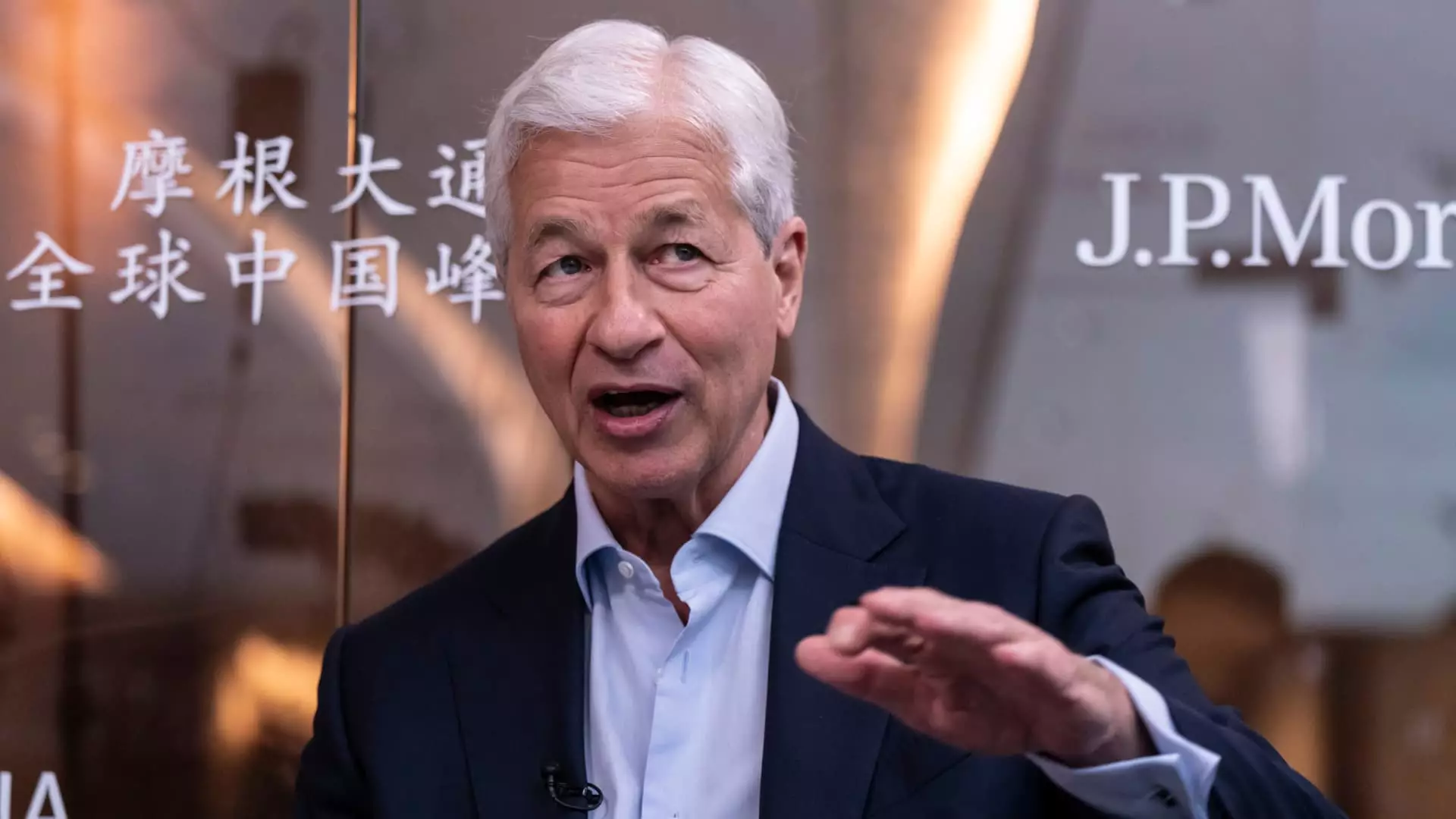As the financial world braces itself for the second-quarter earnings season, a collective optimism seems to be clouded by a troubling distortion—an over-reliance on surface-level figures that often mask deeper vulnerabilities. Major corporations, from banking giants like JPMorgan Chase and Wells Fargo to consumer stalwart Johnson & Johnson, are gearing up to reveal their financial health. But beneath the polished reports and optimistic forecasts lies a more complex narrative—one that demands a critical eye and a refusal to accept numbers at face value.
The apparent growth, modest as it may be—an estimated 4.8% increase in S&P 500 earnings—is often heralded as a sign of resilience. Yet, this figure might be more of a mirage than a sign of genuine strength. Historically, such muted growth rates indicate underlying economic fragility, exacerbated by geopolitical tensions, shifting tariffs, and volatile interest rates. This season’s expectation of the lowest quarterly growth since late 2023 suggests a landscape increasingly marred by unpredictability, not robustness. Investors should question whether these numbers reflect true economic health or whether corporate reporting has become a sanitized version of reality.
Banking Sector: A Study in Caution and Contradiction
Bank stocks, traditionally viewed as reliable indicators of economic vitality, are revealing more contradictions than clarity. JPMorgan Chase, the industry leader, is anticipated to suffer a sharp decline in earnings compared to previous quarters, despite its history of outperforming estimates. The same applies to Wells Fargo and Citigroup, where mixed signals persist: one quarter of beating expectations juxtaposed against cautious guidance from analysts and declining outlooks.
Particularly troubling is the focus on expense trimming and cost management, which, although necessary, often come at the expense of long-term growth. JPMorgan’s supposed focus on “expenses” signals a defensive posture rather than confidence, hinting at an environment where even the titans of finance cannot escape the tremors of economic decline. Meanwhile, Wells Fargo, despite a string of earnings beats, faces an uncertain future due to regulatory pressures and market recalibrations. The strategic narratives are shifting from growth to survival, a sign that the banking sector is no longer the fortress of economic optimism it once appeared to be.
The Illusions of Corporate Strength: Insights from Consumer and Investment Giants
Johnson & Johnson, a stalwart in healthcare, exemplifies the pitfalls of complacency. The firm has consistently beaten earnings expectations since 2011—yet, current forecasts project a nearly 5% decline. This discrepancy underscores a critical point: past performance, while comforting in some respects, does not guarantee future stability. External threats, like the looming threat of tariffs and protectionist policies, loom large over multinational corporations, capable of undermining the very margins that have sustained them.
In the investment banking arena, Morgan Stanley and Goldman Sachs appear to defy gravity, with forecasts of growth and profit increases. Yet, these projected gains should be approached skeptically. Their reliance on volatile trading revenues and cyclical wealth management success masks the inherent fragility of their earnings streams. Moreover, their so-called “momentum” could abruptly reverse if market sentiment shifts or if broader economic headwinds intensify—a risk that is often understated in optimistic forecasts.
The Reality Check: Market Expectations Versus Underlying Risks
What stands out starkly this earnings season is the persistent disconnect between high-flying stock prices and the realities of economic fundamentals. Many of these corporations traded strongly earlier in the year, yet their upcoming reports threaten to reveal underlying vulnerabilities—rising expenses, shrinking margins, and the persistent specter of geopolitical disruptions.
Investors should also heed the patterns of past earnings days: many stocks tend to diverge from expectations, often resulting in significant volatility or even counterintuitive declines despite beating estimates. This indicates that numerical beats alone do not translate into genuine confidence or sustainable growth. The central danger lies in complacency—believing that these reports are the ultimate barometers of success without considering broader systemic risks such as rising inflation, political brinkmanship, or tightening monetary policy.
Why a Critical Approach Is Essential in Turbulent Times
The fundamental flaw many overlook is the assumption that quarterly earnings are an infallible indicator of future stability. This season’s numbers—and the narratives spun around them—should prompt a more skeptical approach. The global economic landscape is fraught with uncertainties: tariffs threaten supply chains, regulatory crackdowns loom, and market liquidity faces constraints. These factors could significantly undermine the apparent stability that corporations seek to project.
From a center-leaning liberal perspective, it is vital to recognize that corporate earnings, while important, should not be interpreted in isolation. They are part of a broader economic story—one that must include concerns over inequality, regulatory oversight, and the sustainability of growth-driven economies. Blindly trusting the numbers without scrutinizing the underlying health of the economy risks fostering complacency, which could be devastating when the inevitable correction arrives.
Investors and policymakers alike should approach this earnings season with a healthy dose of skepticism and an acknowledgment that numbers, no matter how impressive, are just one piece of an increasingly complex puzzle. The real story will unfold in how these corporations—and the economy at large—navigate the tumultuous waters ahead.

